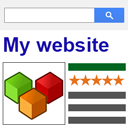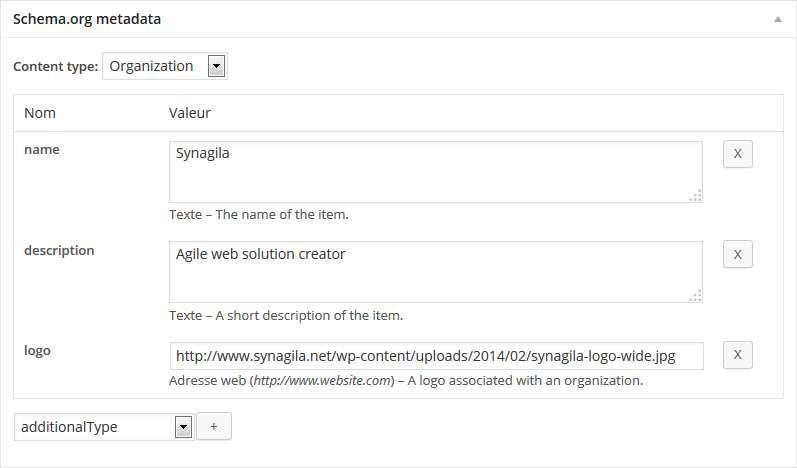Description
Seamless schema automatically inserts Schema.org and Open Graph metadata inside the page header to improve SEO and social network display. The metadata is extracted by default from the blog content data such as the page title, the post excerpt, the thumbnail image but it can be completed for each blog post, page and attachment using the provided metadata editor for simple properties and even within the page’s HTML code for the more complex ones.
Configuration
Configure the default page type and metadata and for the homepage. By clicking Settings / Seamless Schema in the admin page. This is optional since WordPress’ values (page title, description and header image) are used by default. You can also set the Twitter username of your website for the Twitter site cards from here.
If you have Polylang installed, you can set per-language settings.
Authors can fill their Twitter username in their profile for the Twitter site cards.
How to use
When editing a blog post, a page or an attachment, you can set its Schema.org content type and metadata. In most cases, the content-type will be Article or Web Page but you can set a more accurate type such as Organization or Product Review.
You can add extra metadata and override the default ones such as the name, description (post excerpt) and image by selecting the property you want in the select box then click the + button. The properties that already have a default value show up in italic in the list. If you set an invalid property for the selected content type, the row will show up in red and won’t be used on the website.
The metadata is added in meta tags in the page header so it’s totally invisible. However, only canonical properties can be added. For more complex types such as home address and product review, you have to add manually the metadata in the HTML code of your post. Have a look at the Schema.org website for more information about the structure.
Additional OpenGraph and Twitter tags can be added in posts, pages and attachments as custom fields prefixed by og_ or twitter_. For example, to add the tag og:my_tag, add a custom field named og_og:my_tag with the value you want.


